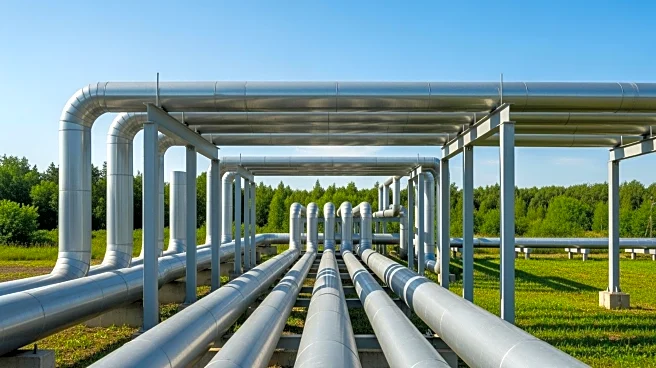What's Happening?
Gas prices in the Midwest region of the United States have seen a notable decline, with the average price per gallon dropping to $2.81 as of Monday. This represents a decrease from the previous week's
price of $2.93 per gallon. The U.S. Energy Information Administration (EIA) reports that the average gas price in the Midwest is now approximately 8.1% lower than the national average, which stood at $3.06 last week. Over the past month, the region has experienced a 17-cent decrease in fuel prices. Historically, gas prices in the Midwest have fluctuated, with a low of $2.81 recorded on December 9, 2024, and a high of $3.10 on April 7, 2025. The current prices are also 9% lower than they were a year ago, when the average was $3.10 per gallon.
Why It's Important?
The decline in gas prices in the Midwest is significant for both consumers and the regional economy. Lower fuel costs can lead to increased disposable income for consumers, potentially boosting spending in other areas of the economy. For businesses, particularly those reliant on transportation and logistics, reduced fuel expenses can lower operational costs and improve profit margins. This price drop may also influence inflation rates, as fuel costs are a major component of the Consumer Price Index. However, while consumers and businesses may benefit from lower prices, the oil and gas industry could face reduced revenues, impacting jobs and investments in the sector.
What's Next?
If the trend of declining gas prices continues, it could lead to further economic adjustments in the Midwest. Consumers might see sustained relief at the pump, which could translate into increased consumer confidence and spending. Businesses may adjust their pricing strategies and operational budgets to reflect lower transportation costs. However, the oil and gas industry may need to reassess production and investment strategies to adapt to the changing market conditions. Policymakers and economic analysts will likely monitor these developments closely to gauge their impact on the broader economy.












